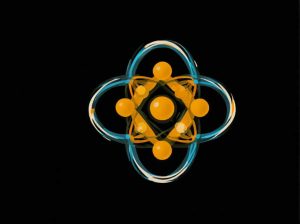Chemical reactions often result in different products including gases liquids or solids. One fascinating type of reaction is the formation of a precipitate where an insoluble solid appears in a solution. This process is crucial in various scientific and industrial applications.
In this topic we will explore what precipitation reactions are their types real-world applications and examples that help in understanding how they work.
What Is a Precipitation Reaction?
A precipitation reaction is a chemical reaction where two soluble ionic compounds react in a solution to form an insoluble solid called a precipitate. This solid settles out of the liquid phase making the reaction visibly noticeable.
How Does a Precipitate Form?
The formation of a precipitate occurs due to the reaction between two aqueous solutions containing ions that combine to form an insoluble compound. The general reaction follows this pattern:
AB (aq) + CD (aq) → AD (s) + CB (aq)
Where:
- AB and CD are soluble compounds in aqueous form.
- AD is the precipitate an insoluble solid.
- CB remains dissolved in the solution.
For example when mixing silver nitrate (AgNO₃) and sodium chloride (NaCl) an insoluble silver chloride (AgCl) precipitate forms:
AgNO₃ (aq) + NaCl (aq) → AgCl (s) + NaNO₃ (aq)
Examples of Precipitation Reactions
Several common reactions produce precipitates making them easy to observe in both laboratory and daily life.
1. Reaction Between Silver Nitrate and Sodium Chloride
Chemical Equation:
AgNO₃ (aq) + NaCl (aq) → AgCl (s) + NaNO₃ (aq)
Observation:
A white AgCl precipitate forms when the two solutions mix.
2. Reaction Between Lead(II) Nitrate and Potassium Iodide
Chemical Equation:
Pb(NO₃)₂ (aq) + 2KI (aq) → PbI₂ (s) + 2KNO₃ (aq)
Observation:
A bright yellow PbI₂ precipitate forms a reaction commonly used in chemistry demonstrations.
3. Reaction Between Barium Chloride and Sodium Sulfate
Chemical Equation:
BaCl₂ (aq) + Na₂SO₄ (aq) → BaSO₄ (s) + 2NaCl (aq)
Observation:
A white BaSO₄ precipitate forms used in medical imaging (barium sulfate suspension in X-ray procedures).
Factors Affecting Precipitation Reactions
Several factors influence whether a precipitation reaction occurs and how much precipitate forms:
1. Solubility Rules
Solubility rules help predict whether a compound will remain dissolved or form a precipitate. For example:
- Most nitrates (NO₃⁻) and alkali metal salts are soluble.
- Most chlorides (Cl⁻) are soluble except those of silver (Ag⁺) lead (Pb²⁺) and mercury (Hg₂²⁺).
- Most sulfates (SO₄²⁻) are soluble except for those of barium (Ba²⁺) calcium (Ca²⁺) and lead (Pb²⁺).
2. Concentration of Reactants
Higher concentrations of reacting ions increase the likelihood of precipitation as more ions are available to combine and form an insoluble solid.
3. Temperature
Temperature can influence solubility. Some compounds become more or less soluble when the temperature changes affecting whether a precipitate forms.
Applications of Precipitation Reactions
Precipitation reactions have many practical applications across various fields.
1. Water Treatment
In wastewater treatment precipitation reactions help remove harmful metal ions. For example adding calcium hydroxide (Ca(OH)₂) to water causes heavy metals to precipitate and be removed.
2. Medical Diagnostics
Barium sulfate (BaSO₄) is used in medical imaging because it is insoluble in the human body and helps improve X-ray visibility of the digestive system.
3. Chemical Analysis
Scientists use precipitation reactions in laboratories to identify the presence of certain ions. For example chloride ions (Cl⁻) in a solution can be detected by adding silver nitrate (AgNO₃) which forms a white AgCl precipitate.
4. Production of Pigments and Paints
Many colored pigments used in paints and dyes result from precipitation reactions where insoluble compounds form vibrant stable colors.
5. Pharmaceutical Industry
Certain drugs are manufactured using precipitation techniques to purify and isolate active compounds.
How to Identify a Precipitate in a Reaction?
To determine if a reaction produces a precipitate:
- Check Solubility Rules: If the product is insoluble in water it forms a precipitate.
- Observe the Reaction: If a cloudy solid appears in a clear solution precipitation has occurred.
- Perform Filtration: Filtering the solution leaves the precipitate as residue on the filter paper.
Precipitation reactions play an essential role in chemistry influencing various industries and scientific fields. By understanding how and why these reactions occur we can utilize them in practical applications such as water purification medical imaging and chemical analysis.
These reactions are easy to observe and experiment with making them an exciting topic for both students and professionals in chemistry.



